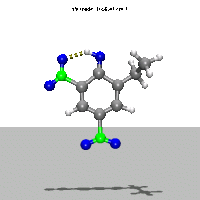  
Services
   
Products   
Resources    |
Like many debates in 'pop science,' the issue of Global Warming tends to 'cool' when the facts are discovered - and admitted. Of course, when we say Global Warming, we imply anthropogenic global warming as opposed to warming as part of a 'natural' cycle.
To many, the term 'climate' implies very slow change. That is, the earth's climate is often thought to be stable and relatively unchanging. Those changes that do occur, in this view, occur on long time scales (tens of thousands of years). Therefore, any change seen on a shorter time scale is thus seen as 'catastrophic.'
In the August 2003 issue of Physics Today, Spencer Weart outlines the error in this 'popular' view of global climate. Early in the 20th century, ample evidence existed for 'abrupt' climate change. However, climatologists at that time did not acknowledge the evidence before them. Weart offers a historical analysis of why this was so. This essay offers an overview of Weart's article.
These scientists believed (and convinced several generations of the 'lay' population) that climatic changes occured only on 10,000 (or longer) time scales. They refused the existence of 1000 year cyclic changes, or 100 year oscillations in the earth's climate.
The changes they were witnessing, less than 100 years ago, were ten year oscillations. Since these workers could not acknowledge 1000 or 100 year cycles, 10 year cycles were certainly out of the question. They discounted direct observation. In his 1950's doctoral thesis, Wallace Broecker outlined evidence of rapic shifts between two dominate 'climate states.' His ideas then were not well accepted, and he spent a 30 year career substantiating his ideas with workable models. Finally, in the 1980's, using a large body of global experimental evidence, Broecker produced a convincing model that showed that it was possible for the entire oceanic current circulation could start or stop in a mere couple of hundred years.
Interestingly, now we acknowledge a common 'ten year cycle' known as the El Nino Effect. Yet even with this, most 'pop scientists' of today will refuse to admit that true climactic changes occur on less than 10,000 year cycles. There is a large body of evidence (taken from Greenland ice core samples in the 1960's) to show that small time scale oscillations, some of them VERY LARGE, occur as a matter of course. These have been fairly accurately recorded to about 14,000 years ago.
Also in the 1960's, Reid Bryson demonstrated that climatic changes occur by discrete jumps rather than slow, gradual changes. These conclusions were based on pollen studies. For example, his group reported a change rapid enough to cause a complete change in the mix of trees (in the area of study) within LESS than one century. This rapid shift occured about 10,500 years ago.
Weart's article outlines numerous other examples, and I have only paraphrased a few here. For more details on Weart's excellent historical analysis of the evolution of climate change timescales in the late 20th Century, please see the Physics Today article. He also gives examples of just how dramatic (and truly catastrophic) some of these rapic changes were, and some of today's 'heatwaves,' 'cold snaps,' and 'droughts' pale by comparison.
One must question, then, why does a relatively small increase in temperature (compared to temperature oscillations mentioned in the previous paragraph) over tens of years cause the 'panic' that is the modern "Global Warming" discussion? Why is it assumed that these temperature oscillations are anthropogenic, though they clearly predate (by millenia) the industrial revolution?
--JR
|







